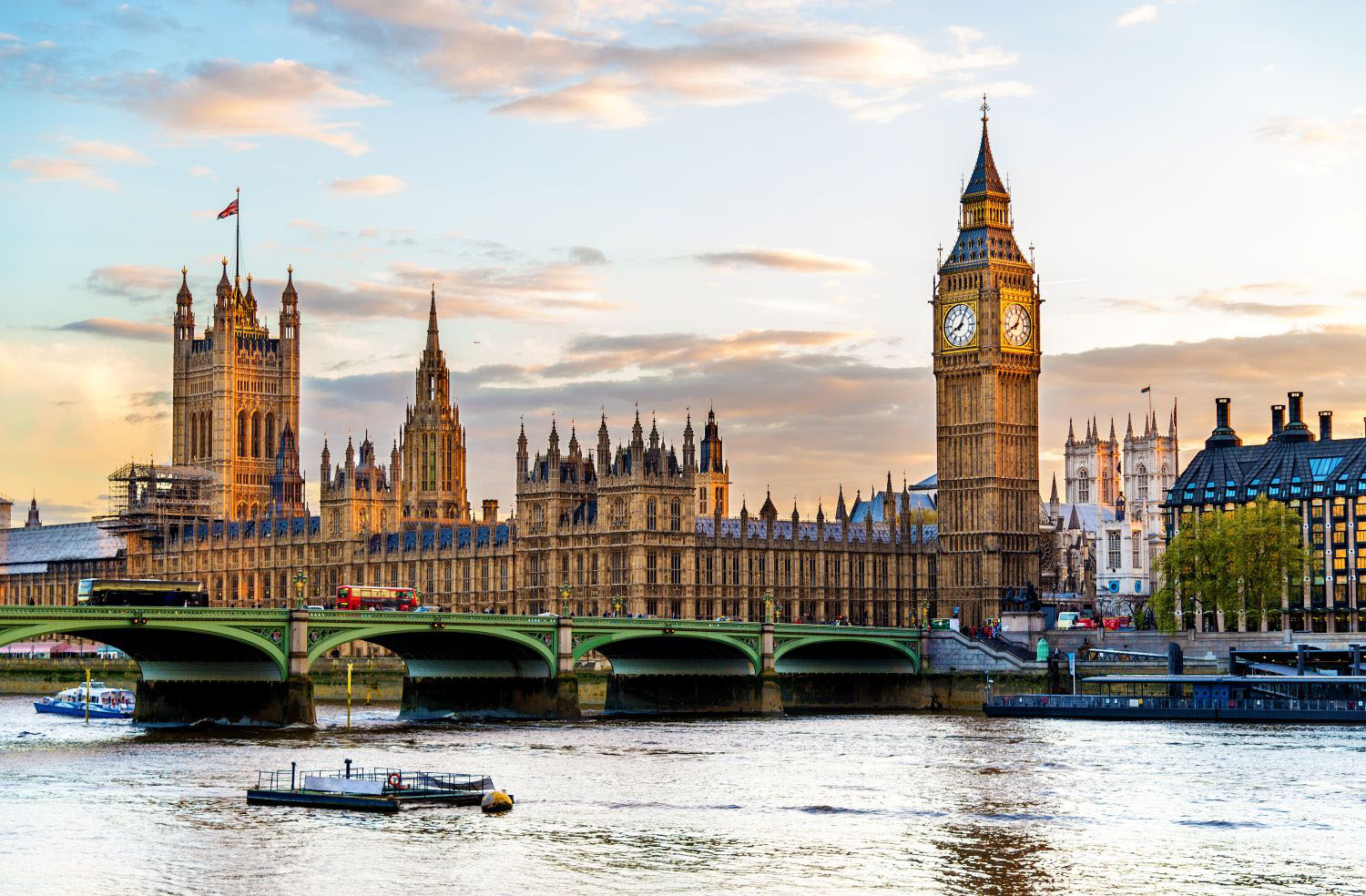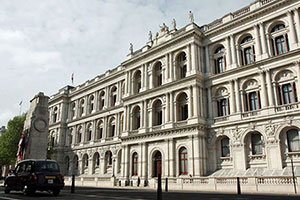On June 23rd, 2016, citizens of the United Kingdom made the consequential decision to leave the European Union—that is, a decision over various subject matters of cooperation and participation in a large number of treaties. About a year later, with a ‘Brexit’ plan nowhere in sight, former Prime Minister David Cameron said that “the lack of a referendum was poisoning British politics,” and that he “put it right.” Following years long, deadlocked negotiations over a Brexit deal, large parts of the British public are demanding a second People’s Vote. Taking stock of the fact that Brexit was supposed to happen by will of the people, but has not, The Economist diagnosed a constitutional crisis, stating that the referendum has brought into light the question of where sovereignty lies in the UK.
As evidenced by Brexit, the use of direct democratic institutions for political decision-making processes is controversial. As constitutions, which build the very foundation for development, are being re-written across the world, it is essential to discuss the use and pitfalls of direct democracy. It is indeed a fundamental question of governance in developed and developing countries.
We hence propose eight principles of direct democracy that shall provide guidance on the basic premises to be considered when direct democratic decision-making institutions are constituted. While institutional setups vary immensely across countries, there may exist a number of fundamental propositions that are widely applicable; propositions that make the use of direct democracy less controversial, less risky, more cohesive, and, not least, more democratic. It is important to discuss and clarify the use of this constitutive democratic institution that receives rather little attention.
Basically, two main types of direct democratic tools prevail: the popular initiative and the referendum (we do not discuss the recall election here, which leads to the removal of an elected official). Both come in different designs and may be applied to revisions of the constitution or simple acts. They are generally legally binding, but can be of political force only, as the Brexit vote was, for example. While we are simplifying the universe of direct democracy here, we acknowledge the variety of implementations across jurisdictions.
Initiative and referendum guide and halt the political legislative process. An initiative works like a ‘steering wheel.’ It ‘guides’ the direction that laws have to take in the future typically upon the collection of a sufficient amount of signatures to request the new law to qualify for the ballot. A referendum works like a ‘brake,’ meant to stop a law drafted by the legislative body from being implemented. In that categorization, Brexit was not a referendum despite its name. It did not work as a brake but as a steering wheel, albeit a rather dysfunctional one since it violated several of the principles developed below.
Direct democracy affects the legislative in two ways. First, initiatives and referenda can override the decisions taken by deceptive politicians (direct effect). Second, the threat of citizens taking up a ballot proposition disciplines the politicians to enact laws in the interest of the people (indirect effect). It is a way to break politicians and parties’ coalitions directed against the common interest of the voters, and a way to hedge against excessive politics by elected representatives, since extreme proposals are at risk to be sacked by the voters. It can be seen as a correction mechanism of representative democracy.
Direct democracy changes the relation of citizens to political authorities. It has been shown to increase citizens’ knowledge and satisfaction with the political process. In a study of former communist countries, referendums are linked to higher tax morale by counteracting the vicious cycle between low trust in the state and tax evasion. And in an experiment involving 49 Indonesian villages, local participation in the decision process on development projects through popular votes resulted in dramatically higher satisfaction among villagers; it also increased knowledge about the projects and led to greater perceived benefits and a higher reported willingness to contribute.
Controversially debated is the risk of a voting majority undermining the rights of a minority, with diverse evidence for same sex-marriage in US states, ethnic minorities in California, and naturalization in Switzerland. Notably, after a period of no conspicuous conflict of initiatives and civil rights, Switzerland experienced a surge in initiatives that threatened to undermine basic rights; this period seems to have come to end, in part as a consequence of civil society organizations raising awareness among the voters.
Referenda have often been used, both by democratic and autocratic regimes, to confirm newly written constitutions by what many constitutions regard as the ultimate sovereign—the people. Well-known examples are the 1958 French constitutional referendum and subsequent 1969 referenda that led to the resignation of President de Gaulle, the 1992 South African Apartheid referendum, the 1993 Malawian democracy referendum, or most recently, the 2019 Cuban constitutional referendum. In contrast to referenda, initiatives are employed on a regular basis mainly in a few developed countries. In the Philippines, for instance, it was included in the constitutional amendments of 1987, but has not since led to any amendments.
Direct democracy is not a substitute for representative democracy, but—in the ideal case—a reasoned complement. For direct democracy to work properly, we propose three sets of principles. The first set is concerned with the proceedings underlying direct democratic decision-making. The second set of principles describes the importance for a citizen to express their will in an unbiased and unaltered way. The third set of principles addresses concerns about the tyranny of the majority over minorities.
Principles of Direct Democracy
Set 1
Questions of proceedings: the choice of the right proceedings to enact direct democratic decision is crucial for the legitimacy and credibility of a popular decision.
1. Bottom up, not top down
Since direct democracy is a check on representative democracy, the call for a vote either through an initiative or a referendum should be initiated within the population and not with the government or parliament. Citizens may exercise the option through the collection of a predetermined number of signatures within a specific time span. In the context of vertical division of power, an initiative may also be sponsored by governments of lower units of that (federal) structure to request changes to legislation at the higher government level. In the context of the EU for instance, that may be one or several member states.
Ultimate sovereign power in a democracy lies either with parliament (e.g. UK) or the voting population (e.g. Switzerland). In countries where parliament is sovereign, there is no point in calling the citizens to vote on a matter, because their voice is explicitly delegated to parliament. If the voting population is sovereign, then citizens should also be sovereign to decide on what matters to call a vote and when and how often. Allowing parliament or government to decide on what matters citizens should have a say is hence inconsistent with the notion of a sovereign people, therefore also inconsistent with direct democracy. It almost necessarily leads to problematic manoeuvres.
If confidence in the executive government depended on approval of a proposition by the voters, often called plebiscites, referenda are likely to be used as a political tool. Plebiscitary referenda ask two separate questions: 1) do you support proposal X? 2) do you support the current government? These questions may be answered differently by some voters but they can only be answered with a single yes or no. Plebiscitary votes are therefore also problematic because they do not allow voters to express their true and unadulterated will (see principle 5).
Top-down referendums called by the executive or legislative body, give ruling politicians additional power over citizens. The fact that such plebiscites are often not legally binding but rather consultative underscores the asymmetry of this type of popular vote and enhances the risk of political manoeuvres. It is no surprise hence that more autocratic regimes use plebiscites to salvage changes in legislation that often reinforce the power of the ruling elite, as recently in the case of constitutional amendments in Turkey.
Complements to the bottom-up nature of direct democracy are mandatory referendums that are automatically triggered over the introduction of specified legislation such as constitutional amendments or specific international treaties. Like with bottom-up referenda and initiatives, it is beyond the decision of the executive or the legislative branch of government to call a vote.
2. Popular decisions should be reversible with an equally legitimate decision and (possibly) held regularly
If the voting population is sovereign, then it should also be able to reverse a decision or just make an updated decision at any point of time. As Habermas observes, “A political vote is not final, but rather an interim result of an on-going process of deliberation.” If voters may not reconsider or update their decision, then the legitimacy of popular votes are undermined by an element of randomness. The gain in popular participation in political decisions remains delusive. Repeated referenda are not a weakness of direct democracy, but an indication of a lively political process. In that sense, the popular vote should never be a “one-shot game.”
3. Implement first at the local government level, rather than at the national government level (in federal states)
Direct democracy is a political tool that citizens have to grow into. Civil society organizations and political parties need to incorporate this additional political check of the populace into their strategies. To reduce the risk of misuse and to allow citizens to acquaint with this political instrument, direct democratic instruments are best first implemented at the subnational government level. That could be town, municipality, local government, state, or provincial-level government.
Introducing direct democratic instruments at the subnational level has another crucial advantage: it allows for a comparison and even competition of different instruments across jurisdictions. Instruments may be adjusted according to the most successful and acceptable practice.
4. Fundamentals of the Referendum Law or Initiative Law should not be open to amendment prior to a popular vote in order to secure the stability of direct democracy
Legislation on direct democratic instruments should be written in the constitution or at a level superior to the ordinary law. By writing the fundamental aspects of referendums and initiatives in a constitutional document, the risk of short-term manipulation through amendments that would favour a certain interest group is reduced.
Set 2
Questions of an unbiased and unadulterated voting: for direct democracy to be credible and legitimate, voters should be able to voice their opinion and make decisions in a genuine and unaffected way.
5. An initiative requires the single-subject rule (unity of the matter)
The single-subject rule in popular votes stipulates that the proposed legislation should deal with one subject only to allow the voter to form and express their opinion freely and genuinely. This principle is also known as the unity of subject matter.
In other words, if a proposed legislation includes several substantive questions, the voter may not have a free choice.
A popular vote is also violating the single subject rule if it is simultaneously a vote of no confidence on the executive government—either de jure or de facto. A so-called plebiscitary referendum does not allow the voter to express their opinion unbiasedly (see principle 1).
Set 3
How to prevent the tyranny of the majority: a main concern of a popular vote is the majority forcing its will onto minorities. As this concern is no less pressing in representative democracies, institutions need to be constructed to protect human rights, especially those of minorities.
The “people” who exercise the power are not always the same people with those over whom it is exercised; and the “self-government” spoken of is not the government of each by himself, but of each by all the rest. (…) The people (…) consequently may desire to oppress a part of their number; and precautions are as much needed against this as against any other abuse of power.
– John Stuart Mill, On Liberty, 1859.
6. Conflicts with existing basic rights have to be explicitly declared prior to the vote
One of the fundamental concerns of direct democracy—as indeed of any political system—is the tyranny of the majority over the minority. If the voting population is sovereign, then it is sovereign to change any rule, including the most fundamental ones. Importantly though, newly proposed legislation may be in contradiction to existing basic laws and human rights protected by the constitution or by international law. The voters should be made aware of such conflicts between existing and newly proposed legislation.
The easiest way to obtain this is that direct democracies may include a rebuttable presumption that assumes that newly formulated initiatives intend to respect existing fundamental rights (discussed in German, here and here). If an initiative committee aims to erode the protection of any fundamental right to any given group of people, this goal needs to be explicitly stated in an initiative. If a committee does not put down any conflicts, it is assumed that such conflicts were intended to be resolved in favour of the pre-existing fundamental rights. The presumption assumes that the voting population does not want to erode basic rights, unless explicitly stated otherwise. A proposition that is nonetheless conflicting with basic law would remain dead letter to the extent that it cannot be applied in a manner that is compatible with fundamental rights.
7. The validity of a proposition is a legal matter and should be decided by a legal body, not a political body
A legal body should conduct the validation of a proposition before it is put to the people. An initiative may be declared as valid if it does not violate the unity of the matter discussed under principle 5.
If the examination of a proposition regarding the unity of the matter—which is a legal question—is put to a political body, then it is likely that the decision is taken with a political rationale rather than coherent to a judicial practice.
8. The validity of the proposed popular vote should be confirmed prior to a vote
In general, proposed legislation is valid if it abides by the unity of the matter (see principle 5). Confirming or disapproving the validity of a proposed legislation in hindsight of a popular vote puts tremendous pressure on the respective legal body. Ruling against the majority of the voting population is considerably more serious than before a popular vote has taken place.
Many scholars, experts, and politicians are biased against the use of popular initiatives and referenda. To leave fundamental decisions of coexistence to the people allegedly seems to be an act vulnerable to populism or a danger to democracy. Yet indeed, political and economic power is still highly concentrated in our executive and legislative branches of government that have no incentive to devolve authority, with disastrous consequences at times.
Direct democracy should neither be seen as panacea for all political problems, nor should it be denounced as inherently populist. A discussion on direct democracy calls for the question of what sovereignty is and where it lies. When it does indeed lie with the voting population, then the demos—the people—have the ultimate kratos—the power or sovereignty. If consensus over the value of checks and balances and of constitutional rights erodes among the people, no institutional design will be able to protect these achievements in the long run. As Judge Learned Hand said:
I often wonder whether we do not rest our hopes too much upon constitutions, upon laws, and upon courts. These are false hopes; believe me, these are false hopes. Liberty lies in the hearts of men and women; when it dies there, no constitution, no law, no court can save it; no constitution, no law, no court can even do much to help it.
– Learned Hand (U.S. Judge, Central Park, New York City, 21 May 1944)
This might well be the single most important quality of direct democracy. It is a constant reminder that all the legitimacy of political power emanates from the people and that achievements of liberal democracy cannot be upheld in the long run if we neglect to win consensus over its value time and time again, referendum for referendum, generation for generation. It is a safeguard against the intellectual laziness that takes the value of human rights and of checks and balances as given and self-evident. It is a constant reminder that the institutions of open societies are built on thin ice.
It is therefore important to understand the implications and pitfalls of direct democratic decision making and how this powerful tool can be implemented in a safe and useful way to benefit countries as a whole. Instead of fearing discussions over political decision-making and destructive political power, we should keep on questioning and discussing our political institutions.
Disclaimer
CGD blog posts reflect the views of the authors, drawing on prior research and experience in their areas of expertise. CGD is a nonpartisan, independent organization and does not take institutional positions.





